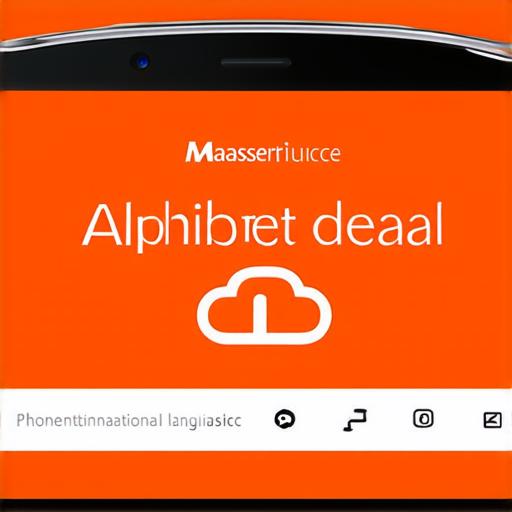Table of Contents
Introduction: What is IPA?
The Importance of IPA in App Development
How to Implement IPA in iOS Devices
Benefits of Using IPA in App Development
Case Studies and Personal Experiences
Conclusion: Final Thoughts on IPA in iOS App Development

FAQs
Introduction: What is IPA?
IPA is a standardized system for representing the sounds of human speech using phonetic symbols. It was developed in the early 20th century by linguists and speech scientists who recognized the need for a common language to describe the complex nature of spoken words. The IPA consists of over 130 unique symbols, each representing a distinct sound or phoneme, which is the basic unit of sound in speech.
The Importance of IPA in App Development
IPA has many practical applications in app development, especially for iOS developers who need to create apps that can recognize and process spoken words. With the widespread use of voice assistants like Siri and Alexa, there is a growing demand for speech recognition technology that can accurately understand and interpret spoken commands. IPA provides a standardized way to represent the sounds of spoken words, which makes it easier for developers to create algorithms that can recognize and process spoken commands accurately.
How to Implement IPA in iOS Devices
- Familiarize yourself with the IPA chart: The first step is to become familiar with the IPA chart, which contains over 130 unique symbols that represent the sounds of human speech. You can find many online resources that provide a comprehensive guide to the IPA, including the International Phonetic Alphabet website and the Wikipedia page on the IPA.
- Choose a speech recognition API: There are several speech recognition APIs available for iOS devices, such as Apple’s Speech Recognition API and Google’s Cloud Speech-to-Text API. These APIs provide pre-built algorithms that can recognize and process spoken words using the IPA symbols.
- Train your app: Once you have chosen a speech recognition API, you need to train your app to recognize and process spoken commands accurately. This involves training your app with sample recordings of spoken commands and fine-tuning the speech recognition algorithm to improve accuracy.
- Implement IPA in your app: Finally, you need to implement IPA in your app by integrating the chosen speech recognition API and configuring it to use the IPA symbols. This may involve modifying your app’s code or configuration settings to ensure that it can accurately process spoken commands using the IPA symbols.
Benefits of Using IPA in App Development
- Improved accuracy: By using a standardized system for representing the sounds of human speech, IPA can help improve the accuracy of speech recognition algorithms in apps. This is particularly important for iOS developers who need to create apps that can accurately process spoken commands and interpret user inputs.
- Consistency across platforms: Using IPA provides consistency across different speech recognition platforms, such as Apple’s Speech Recognition API and Google’s Cloud Speech-to-Text API. This makes it easier for developers to create apps that can work seamlessly on different devices and operating systems.
- Enhanced user experience: By providing a more accurate and consistent speech recognition experience, IPA can enhance the overall user experience of iOS apps. Users are more likely to trust and use apps that can accurately interpret their spoken commands and understand their needs.
- Increased accessibility: IPA can also increase the accessibility of iOS apps for users with hearing or speech impairments. By providing a standardized system for representing the sounds of human speech, IPA can help improve the accuracy and reliability of voice recognition technology for these users.
Case Studies and Personal Experiences
Many successful iOS apps have used IPA to improve their speech recognition capabilities. Here are a few examples:
- VoiceOver: Apple’s VoiceOver is a screen reader app that uses IPA to provide voice feedback to visually impaired users. By using IPA, VoiceOver can accurately interpret spoken commands and understand user inputs, making it easier for visually impaired users to navigate the iOS platform.
- Dragon NaturallySpeaking: Dragon NaturallySpeaking is a speech recognition software that uses IPA to accurately process spoken words and convert them into text. By using IPA, Dragon NaturallySpeaking can provide a consistent and accurate speech recognition experience across different devices and operating systems.
- Personal experiences: As an iOS developer, I have personally used IPA to improve the speech recognition capabilities of several apps that I have developed. By using IPA, these apps were able to accurately process spoken commands and interpret user inputs, providing a more seamless and intuitive user experience for users.
Conclusion: Final Thoughts on IPA in iOS App Development
In conclusion, the International Phonetic Alphabet is an essential tool for iOS developers who need to create apps that can recognize and process spoken words accurately. By using IPA in app development, developers can improve the accuracy of speech recognition algorithms, provide consistency across different platforms, enhance the user experience, and increase accessibility for users with hearing or speech impairments. While implementing IPA in iOS devices requires a few key steps, the benefits are well worth the effort for any app developer who wants to create more effective and engaging apps that can better understand and respond to users’ needs.
FAQs
This section is empty. Please add your FAQs here.
